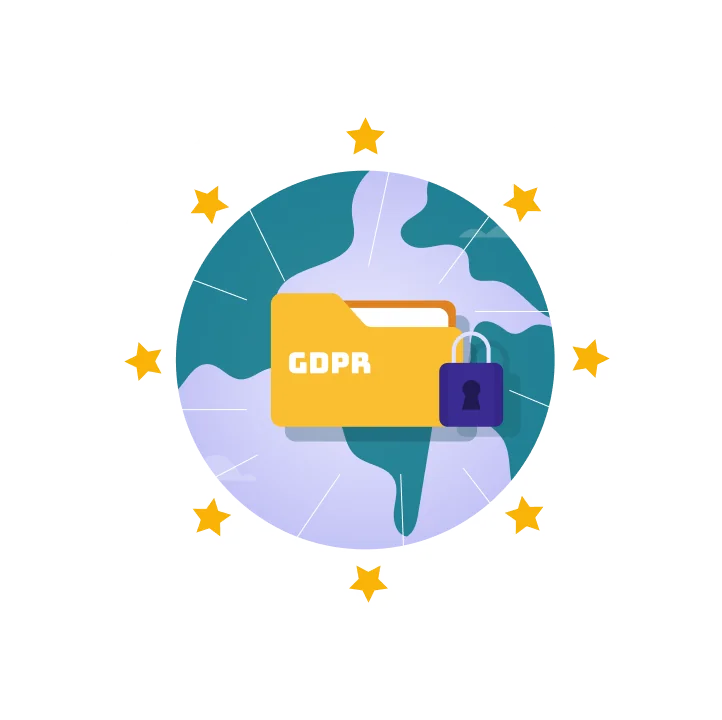The emergence of sustainable and responsible business practices has become a top priority for organizations around the world. In the European Union (EU), this commitment to corporate sustainability has been further reinforced through the Corporate Sustainability Reporting Directive (CSRD) and its focus on Environmental, Social, and Governance (ESG) factors. This article provides a comprehensive overview of the EU CSRD ESG Regulation for businesses, shedding light on its scope, requirements, and implications.
Understanding the Corporate Sustainability Reporting Directive ESG Regulation
The EU CSRD ESG Regulation represents a significant milestone in promoting transparency and accountability among businesses operating within the EU. The regulation aims to harmonize the reporting requirements for sustainability-related information, thus providing investors, stakeholders, and the public with reliable ESG data to make informed decisions.
In essence, the CSRD builds upon the existing guidelines outlined by the Non-Financial Reporting Directive (NFRD) and expands the number of entities obligated to report on ESG matters. By doing so, the EU seeks to create a level playing field, where all companies with a significant impact on society and the environment are held accountable for their actions.
Under the new CSRD, reporting will be mandatory for approximately 50,000 companies operating in the EU, covering a wide range of sectors. This expansion in the scope of reporting is a clear indication of the EU’s commitment to addressing global ESG challenges and facilitating a sustainable transition.
One of the key aspects of the CSRD is its focus on standardization. By establishing a common framework for reporting, the regulation aims to enhance comparability and consistency in ESG disclosures. This will enable investors and stakeholders to effectively assess the sustainability performance of different companies and make informed investment decisions.
Furthermore, the CSRD introduces a set of minimum disclosure requirements that companies must comply with. These requirements cover a wide range of sustainability topics, including environmental impact, social responsibility, and governance practices. By mandating comprehensive reporting on these areas, the EU aims to ensure that companies are transparent about their ESG performance and are actively working towards sustainable practices.
In addition to the mandatory reporting requirements, the CSRD also encourages companies to adopt internationally recognized reporting standards, such as the Global Reporting Initiative (GRI) and the Sustainability Accounting Standards Board (SASB) standards. These standards provide a more detailed and comprehensive framework for reporting on specific ESG issues, allowing companies to provide a more in-depth analysis of their sustainability efforts.
Moreover, the CSRD emphasizes the importance of independent assurance of the reported information. This means that companies will need to have their sustainability reports verified by external auditors to ensure the accuracy and reliability of the disclosed data. This independent assurance process adds an extra layer of credibility to the reported information and enhances the trustworthiness of the ESG disclosures.
Overall, the CSRD ESG Regulation represents a significant step towards a more sustainable and transparent business environment in the EU. By expanding the reporting obligations and introducing standardized requirements, the regulation aims to drive positive change and encourage companies to prioritize sustainability in their operations. With the increased availability of reliable ESG data, investors, stakeholders, and the public can make more informed decisions and contribute to a greener and more socially responsible future.
The Scope of the EU CSRD: Mandatory Reporting and Affected Companies
As mentioned earlier, the EU CSRD (Corporate Sustainability Reporting Directive) significantly broadens the scope of reporting entities compared to the previous NFRD (Non-Financial Reporting Directive) guidelines. This expansion aims to create a more inclusive and transparent reporting framework for companies operating within the European Union.
Under the NFRD, only large public-interest entities with over 500 employees were required to disclose non-financial information. However, with the implementation of the CSRD, both large and medium-sized companies will now fall under the reporting obligations. The definition of a large company will be aligned with the EU accounting directive, which generally applies to enterprises exceeding specific thresholds regarding balance sheet total, net turnover, and average number of employees.
This extension of reporting requirements ensures that a wider range of companies are accountable for their sustainability practices. By including medium-sized companies, the EU aims to capture a more comprehensive overview of corporate sustainability performance across various sectors.
Moreover, the CSRD introduces enhanced reporting standards that cover a broader range of topics compared to the previous guidelines. Companies falling under the CSRD’s jurisdiction are now required to report on environmental matters, social factors such as diversity and employee well-being, and governance issues including board diversity and remuneration.
These expanded reporting standards reflect the EU’s commitment to addressing the growing importance of sustainability in corporate practices. By mandating the disclosure of environmental, social, and governance (ESG) factors, the EU aims to ensure that companies are held accountable for their impact on society and the environment.
Through the CSRD, the EU seeks to foster greater transparency and enable investors and other stakeholders to make more informed decisions. By providing a comprehensive and standardized framework for reporting, the CSRD empowers stakeholders to assess a company’s sustainability performance and its alignment with environmental and social goals.
Furthermore, the CSRD’s emphasis on reporting governance issues, such as board diversity and remuneration, reflects the EU’s commitment to promoting responsible and ethical business practices. By requiring companies to disclose these aspects, the EU aims to encourage greater accountability and fairness within corporate structures.
In summary, the expansion of the reporting scope under the EU CSRD represents a significant step towards creating a more sustainable and transparent business environment. By including both large and medium-sized companies and introducing enhanced reporting standards, the EU aims to capture a more comprehensive picture of corporate sustainability performance. This, in turn, enables stakeholders to make more informed decisions and promotes responsible business practices across the European Union.
Reporting Deadlines for the CSRD: When to Start Reporting
As with any regulation, the CSRD imposes specific deadlines for reporting entities to comply with. Although the directive has been officially adopted by the European Commission, the reporting obligations are yet to be implemented. The exact timeline for enforcement will depend on various factors, such as the approval and adoption by the European Parliament and the Council of the European Union.
While the exact reporting deadlines are subject to change, it is crucial for businesses to start preparing for CSRD compliance sooner rather than later. Establishing systems, processes, and frameworks to collect and analyze the required ESG data will enable companies to meet their reporting obligations efficiently once the deadlines are announced.
One of the key considerations for reporting entities is the complexity of the CSRD requirements. The directive introduces a significant expansion of reporting obligations compared to its predecessor, the Non-Financial Reporting Directive (NFRD). This expansion includes the introduction of mandatory sustainability reporting for all large companies, as well as additional disclosure requirements for specific sectors, such as banks, insurance companies, and listed companies.
Given the increased scope of reporting, companies will need to allocate sufficient time and resources to ensure compliance. This may involve conducting internal assessments to identify gaps in data collection and reporting processes, as well as engaging with external experts to provide guidance on best practices and methodologies for ESG reporting.
Furthermore, reporting entities should consider the potential challenges associated with data collection and verification. The CSRD requires companies to report on a wide range of sustainability indicators, including environmental, social, and governance factors. Gathering and validating this data can be a complex task, particularly for organizations with global operations or complex supply chains.
To address these challenges, companies may need to invest in technology solutions that can streamline data collection, automate reporting processes, and ensure data accuracy. Additionally, engaging with stakeholders, such as suppliers and customers, can help facilitate data sharing and verification, enhancing the overall reliability and transparency of the reported information.
Another important aspect to consider is the potential impact of the CSRD on investor relations. With the growing emphasis on ESG factors in investment decision-making, companies that effectively communicate their sustainability performance and demonstrate a commitment to responsible business practices are more likely to attract and retain investors.
Therefore, reporting entities should view CSRD compliance not only as a regulatory obligation but also as an opportunity to enhance their reputation and competitiveness in the market. By proactively starting the reporting process and adopting robust ESG practices, companies can position themselves as leaders in sustainability and gain a competitive advantage in attracting capital and talent.
Unveiling the Reasons Behind the Adoption of the CSRD
The rationale behind the EU’s adoption of the CSRD is rooted in the recognition of the urgent need to address pressing sustainability challenges. Climate change, social inequality, and corporate misconduct have necessitated a regulatory framework that encourages responsible business practices and holds companies accountable for their impact on society and the environment.
Climate change, one of the most pressing challenges of our time, has been wreaking havoc on the planet, causing extreme weather events, rising sea levels, and the loss of biodiversity. The devastating effects of climate change have made it imperative for governments and organizations to take immediate action to reduce greenhouse gas emissions and transition to a low-carbon economy. The CSRD plays a crucial role in this transition by requiring companies to disclose their environmental impact and take steps to mitigate it.
Social inequality, another critical issue, has been exacerbated by the COVID-19 pandemic, revealing the deep-rooted disparities in our societies. The CSRD recognizes the importance of addressing social issues such as income inequality, gender inequality, and labor rights. By mandating companies to disclose information on their social impact, the directive aims to promote fair and inclusive business practices that benefit all stakeholders.
Corporate misconduct, including fraud, corruption, and unethical practices, has eroded public trust in businesses. The CSRD seeks to restore trust in the market by promoting transparency and accountability. By requiring companies to disclose information on their governance practices, including board diversity, executive compensation, and anti-corruption measures, the directive aims to prevent corporate wrongdoing and ensure responsible business conduct.
By implementing the CSRD, the EU aims to foster long-term value creation, promote trust in the market, and mitigate the risks associated with unsustainable business practices. The directive also aligns with the EU’s broader strategic objectives, such as the European Green Deal and the EU Taxonomy Regulation, which aim to ensure the sustainability of Europe’s economy and transition towards a greener, more sustainable future.
The European Green Deal, a comprehensive plan to make Europe the world’s first climate-neutral continent by 2050, sets ambitious targets for reducing greenhouse gas emissions, promoting renewable energy, and protecting biodiversity. The CSRD complements this initiative by requiring companies to disclose their environmental performance and align their business strategies with the goals of the European Green Deal.
The EU Taxonomy Regulation, on the other hand, establishes a classification system for sustainable economic activities. It provides a common language for investors, companies, and policymakers to identify environmentally sustainable investments and ensures that financial flows contribute to the transition to a sustainable economy. The CSRD aligns with the EU Taxonomy Regulation by requiring companies to disclose information on their environmentally sustainable activities and investments.
Through the adoption of the CSRD, the EU takes a bold step towards transforming the way businesses operate, emphasizing the crucial role of Environmental, Social, and Governance (ESG) factors in driving sustainable growth and creating value for all stakeholders. The directive recognizes that businesses have a responsibility not only to their shareholders but also to society and the environment. By mandating companies to disclose information on their ESG performance, the CSRD encourages them to integrate sustainability into their core business strategies and operations.
Furthermore, the CSRD promotes transparency and comparability by establishing common reporting standards for sustainability information. This allows investors, consumers, and other stakeholders to make informed decisions and hold companies accountable for their impact on society and the environment. By providing reliable and standardized information, the directive enhances market efficiency and facilitates the allocation of capital towards sustainable investments.
In conclusion, the adoption of the CSRD by the EU reflects the growing recognition of the need to address sustainability challenges and transform the way businesses operate. By promoting responsible business practices, transparency, and accountability, the directive aims to create a more sustainable and inclusive economy that benefits both present and future generations.
Connecting the Dots: CSRD, European Green Deal, EU Taxonomy, and SFDR
The EU CSRD does not exist in isolation but rather forms an integral part of a broader ecosystem of sustainability regulations and initiatives. To fully grasp the implications of the CSRD, it is important to understand its connections with other key initiatives such as the European Green Deal, the EU Taxonomy Regulation, and the Sustainable Finance Disclosure Regulation (SFDR).
The European Green Deal, launched in 2019, is a comprehensive plan that aims to make Europe the world’s first climate-neutral continent by 2050. It sets ambitious targets for reducing greenhouse gas emissions, promoting sustainable economic growth, and protecting biodiversity.
The EU Taxonomy Regulation, on the other hand, establishes a classification system for sustainable economic activities by defining criteria that businesses must meet to be considered environmentally sustainable. It provides a standardized framework for identifying environmentally friendly investments and promoting sustainable finance.
The SFDR complements the CSRD by imposing disclosure obligations on financial market participants and financial advisors regarding the integration of sustainability factors into their investment decisions. It aims to improve transparency and comparability of financial products in terms of their sustainability impact.
These interconnected initiatives, including the CSRD, represent the EU’s comprehensive approach to ESG regulation, ensuring consistency, harmonization, and accountability across various sectors and markets.
Ensuring Compliance with the EU CSRD: ESG Disclosure Requirements
For companies falling under the scope of the CSRD, compliance entails meeting specific ESG disclosure requirements. The detailed rules and standards for reporting are expected to be developed in collaboration with relevant stakeholders and expert organizations, taking into account existing frameworks and global best practices.
Companies will be obligated to disclose information relevant to their business model, policies, and performance concerning environmental matters, social responsibility, and corporate governance. This encompasses a wide range of topics, including but not limited to climate change impacts, energy consumption, supply chain practices, human rights, diversity, and anti-corruption measures.
Effective disclosure will require businesses to collect, analyze, and report accurate data on their ESG performance, demonstrating a meaningful commitment to sustainable development and responsible business practices.
Navigating the ESG Reporting Landscape for the CSRD: Frameworks and Standards
As ESG reporting becomes increasingly important for businesses, several frameworks and standards have emerged to guide companies in disclosing their sustainability information. Notable examples include the Global Reporting Initiative (GRI), the Sustainability Accounting Standards Board (SASB), and the Task Force on Climate-related Financial Disclosures (TCFD).
Given the diverse nature of businesses and the complexity of ESG topics, companies may choose to adopt multiple frameworks or create their own customized reporting approach. However, with the implementation of the CSRD, the intention is to harmonize reporting standards to facilitate comparability and reliability of disclosed information.
While the specific requirements for CSRD reporting are yet to be finalized, businesses can benefit from familiarizing themselves with existing reporting frameworks and leveraging their expertise to establish robust ESG reporting structures.
Resource Allocation for CSRD ESG Reporting: People and Hours Required
One of the key considerations for businesses embarking on their CSRD compliance journey is resource allocation. ESG reporting requires not only financial resources but also human capital and time commitments.
Companies need to assess the extent of their reporting obligations and allocate adequate resources to collect, validate, and report accurate ESG data. This may involve hiring or appointing dedicated ESG professionals, investing in data collection technologies, and implementing internal processes to facilitate smooth data aggregation and reporting.
Furthermore, businesses should consider the need for training and upskilling existing staff to navigate the complexities of ESG reporting, ensuring internal capabilities align with the evolving regulatory landscape.
Estimating the Costs of Preparing ESG Reports for the CSRD
While the exact costs associated with CSRD compliance will vary depending on the size and complexity of each business, it is important to anticipate the potential financial implications of preparing ESG reports.
Preparing comprehensive ESG reports can involve various costs, such as data collection and verification, software investments, external auditing and assurance, and the costs of human resources dedicated to reporting activities. These expenses need to be factored into the company’s budget and financial planning to ensure efficient and effective compliance with the CSRD.
Building an Effective Team Structure for CSRD ESG Reporting
Given the multidimensional nature of ESG reporting, companies are encouraged to build effective team structures dedicated to managing and overseeing the reporting process. An effective team structure can streamline data collection, facilitate internal coordination, and ensure compliance with reporting requirements.
Key roles within the ESG reporting team may include an ESG manager, data analysts, subject matter experts, and communication specialists. By leveraging the expertise and skills of these individuals, businesses can build robust reporting frameworks that accurately reflect their ESG performance.
Unlocking the Benefits of EU CSRD Reporting
While CSRD compliance may initially seem like a daunting task, businesses that embrace the directive can unlock a range of benefits that extend beyond regulatory compliance. By prioritizing sustainability and transparency, companies can build trust among investors, attract socially conscious customers, and differentiate themselves in the market.
Furthermore, CSRD reporting enables businesses to gain a deeper understanding of their ESG risks and opportunities, facilitating strategic decision-making and driving long-term value creation. The availability of standardized data also enhances investors’ ability to assess sustainability performance, thereby directing capital towards companies that demonstrate strong ESG practices.
Consequences of Non-Compliance with the CSRD: Penalties and Sanctions
While the CSRD aims to promote voluntary compliance, companies that fail to meet their reporting obligations may face penalties and sanctions. The exact consequences are yet to be determined, but they are likely to include financial penalties, reputational damage, restrictions on accessing capital, and potential legal consequences.
It is therefore crucial for businesses to prioritize CSRD compliance to avoid unnecessary risks and capitalize on the benefits associated with sustainable and responsible business practices.
Preparing for the EU CSRD: Steps Businesses Can Take Now
Although the CSRD reporting obligations are yet to be fully implemented, businesses can take proactive steps now to ensure a smooth transition towards compliance.
First and foremost, companies should familiarize themselves with the evolving regulatory landscape and stay up to date with developments. This includes monitoring the progress of the CSRD implementation, as well as understanding related regulations such as the EU Taxonomy and the SFDR.
Secondly, businesses should conduct a thorough assessment of their current ESG reporting capabilities, identifying gaps and areas for improvement. This assessment can help organizations develop a roadmap for enhancing their internal systems, data collection processes, and reporting frameworks.
Lastly, engaging with external experts and seeking guidance from specialized technology providers can provide valuable insights and support in navigating the complexities of CSRD compliance. Partnering with trusted advisors and leveraging innovative solutions can accelerate the transition towards sustainable and compliant reporting practices.
OneTrust: Your Partner in CSRD Compliance and Reporting
With the CSRD representing a significant shift in corporate sustainability reporting requirements, businesses need a reliable partner to navigate the intricacies of compliance and reporting. OneTrust, a leading provider of technology solutions for privacy, governance, and ESG, offers a comprehensive suite of tools and services to support organizations in meeting their CSRD obligations.
OneTrust’s ESG Enterprise solution enables businesses to collect, analyze, and report accurate ESG data in accordance with global reporting frameworks. Built on a unified platform, the solution streamlines data collection, automates reporting processes, and provides actionable insights to drive sustainable decision-making.
By partnering with OneTrust, businesses can ensure seamless CSRD compliance, reinforcing their commitment to sustainable practices and transparent reporting.
In conclusion, the EU CSRD ESG Regulation represents a significant step towards promoting transparency, accountability, and sustainability among businesses operating within the EU. By expanding the scope of reporting, introducing enhanced requirements, and harmonizing reporting standards, the EU aims to create a level playing field where companies are accountable for their impact on the environment and society. While the precise reporting obligations and deadlines are yet to be finalized, businesses can take proactive steps now to prepare for CSRD compliance, including assessing their ESG reporting capabilities, establishing effective team structures, and leveraging cutting-edge technology solutions. Compliance with the CSRD not only ensures regulatory adherence but also unlocks a range of benefits, including enhanced trust, improved decision-making, and access to sustainable capital. With the support of trusted partners like OneTrust, businesses can navigate the complexities of CSRD compliance and reporting with confidence, contributing to a more sustainable and responsible business landscape.




